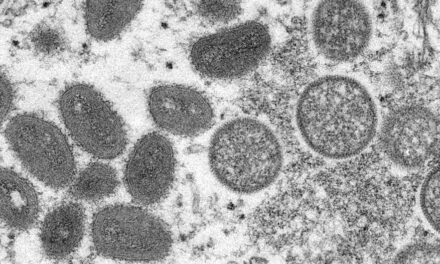A breakthrough has made photodynamic therapy safer and more effective.
Scientists have developed new light-sensitive chemicals that could significantly enhance the treatment of aggressive cancers while minimizing side effects. In laboratory tests on mice, the therapy completely eliminated metastatic breast cancer tumors.
These newly developed compounds, known as cyanine-carborane salts, are detailed in a recent study published in Angewandte Chemie, a journal of the German Chemical Society.
Advancements in Photodynamic Therapy (PDT)
The treatment builds on photodynamic therapy (PDT), a method that has been used for decades to treat skin and bladder cancers. PDT involves introducing light-sensitive chemicals into the body, where they accumulate in cancer cells. When exposed to light, these compounds activate and destroy the diseased cells.
The light causes the chemicals to generate highly reactive oxygen molecules—like tiny biochemical firecrackers—that break down cancer cells from the inside while leaving healthy cells unharmed.
Despite its promise, PDT has limitations, including prolonged light sensitivity, poor tissue penetration, and off-target toxicity. These drawbacks can prevent complete tumor eradication and may lead to a recurrence of the cancer.
A Multidisciplinary Effort to Overcome PDT’s Limitations
The research team, comprising scientists from the University of California, Riverside, and Michigan State University (MSU), worked to refine PDT and improve its precision.
“Cyanine-carborane salts minimize these challenges, offering a safer, more precise way to destroy tumors completely while sparing healthy tissue,” said Professor Sophia Lunt, an MSU cancer researcher and co-principal investigator of the project.
Current FDA-approved PDT chemicals remain in the body for extended periods. After treatment, patients must stay in the dark for two to three months because even low levels of light exposure can cause severe blistering and burns.
In contrast, the researchers found that cyanine-carborane salts flush out of the body more quickly, remaining only in the cancer cells requiring treatment.
Targeted Treatment with Minimal Side Effects
Vincent Lavallo, a UCR chemistry professor and co-principal investigator, specializes in the synthesis of carboranes.
“The most interesting thing is the targeting ability of this substance we made to go right where it’s needed and stay there while the rest passes through. That way, you’ll only kill the cells right where the cancer is but not harm the patient,” Lavallo said.
Lavallo collaborated with Richard Lunt, an MSU endowed professor of chemical engineering, to develop the cyanine-carborane salts.
Unlike conventional PDT agents, the salts exploit a natural vulnerability in cancer cells. They’re taken up by proteins called OATPs that are overexpressed in tumors. This allows for precise targeting without the need for costly additional chemicals currently used with PDT to help target cancer cells.
Traditional PDT is also limited in its ability to treat deep-seated tumors because it works with wavelengths of light that penetrate only a few millimeters into the body. Once inside cancer cells, cyanine-carborane salts can be activated by near-infrared light, which penetrates deeper into tissues. This could expand the range of cancers that can be treated.
Given their success, researchers are encouraged to continue their studies and explore additional applications for the salts in cancer therapies. It may be possible to modify the compounds to work with energy sources other than light, enabling even deeper penetration into the body.
“Our work offers a targeted, safe, and cost-effective treatment for aggressive breast cancers with limited treatment options,” said Amir Roshanzadeh, the study’s first author and an MSU cell and molecular biology graduate student. “It also opens the door to breakthroughs in other approaches for cancer therapy and targeted drug delivery.”
Reference:
Roshanzadeh, A., Medeiros, H. C. D., Herrera, C. K., Malhado, C., Tomich, A. W., Fisher, S. P., Lovera, S. O., Bates, M., Lavallo, V., Lunt, R. R., & Lunt, S. Y. (2025). Next-Generation Photosensitizers: Cyanine-Carborane Salts for Superior Photodynamic Therapy of Metastatic Cancer. Angewandte Chemie International Edition. DOI: 10.1002/anie.202419759.
Disclaimer: This article presents research findings based on laboratory studies and does not constitute medical advice. Further clinical trials and regulatory approval are necessary before this treatment becomes available for human use.












